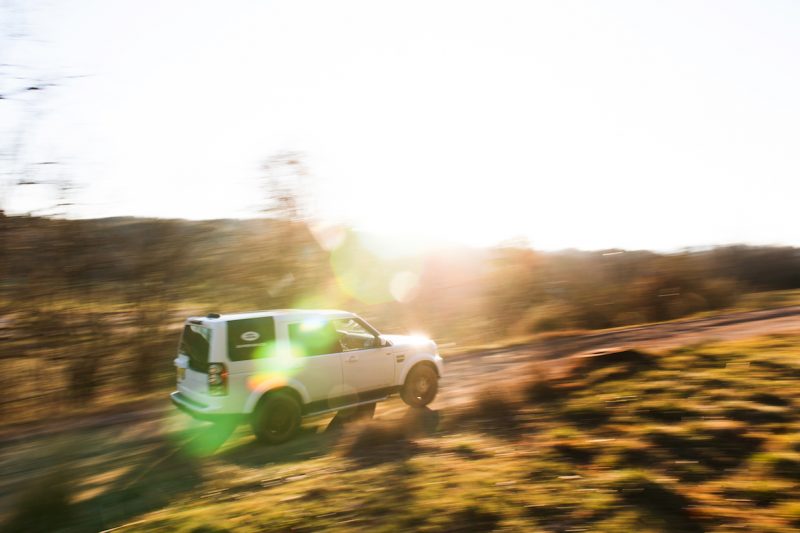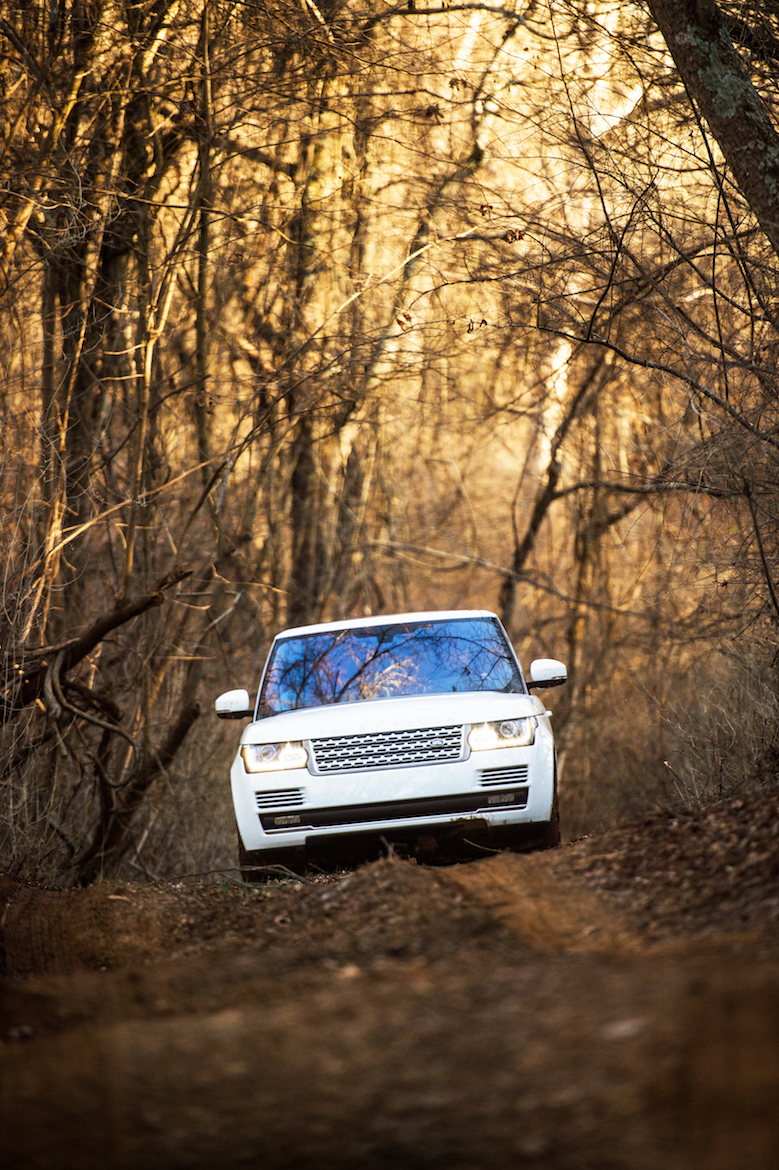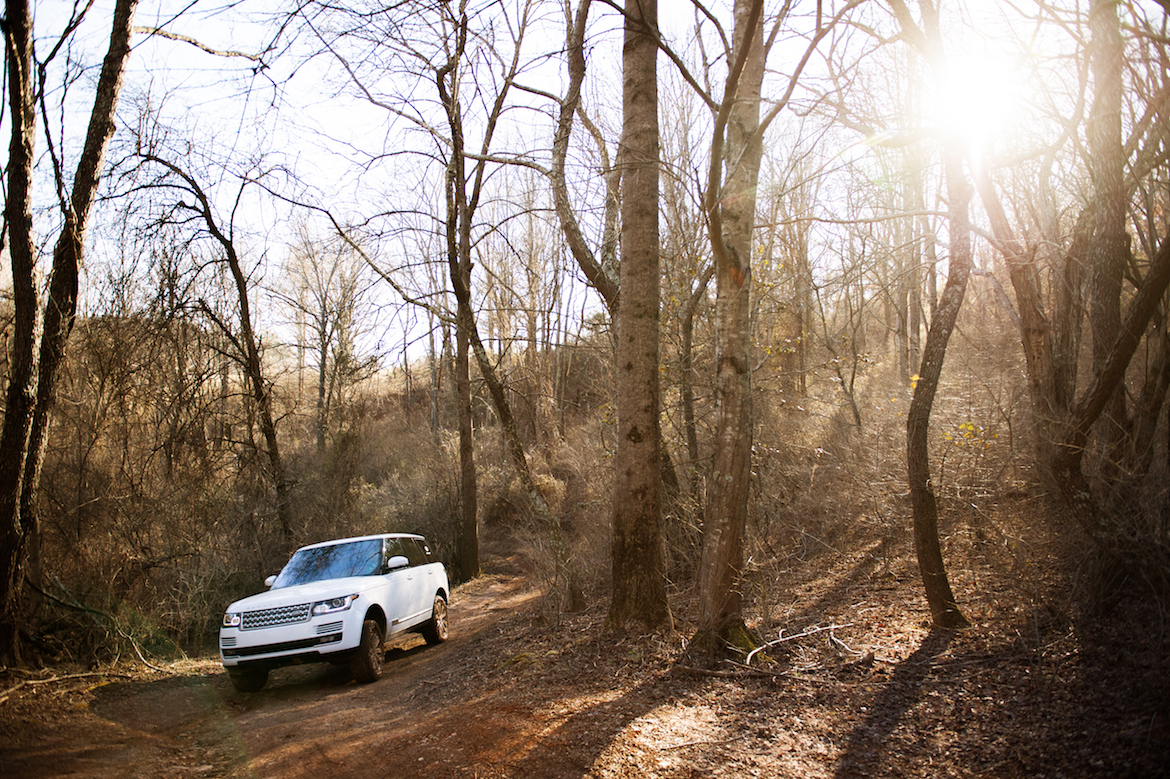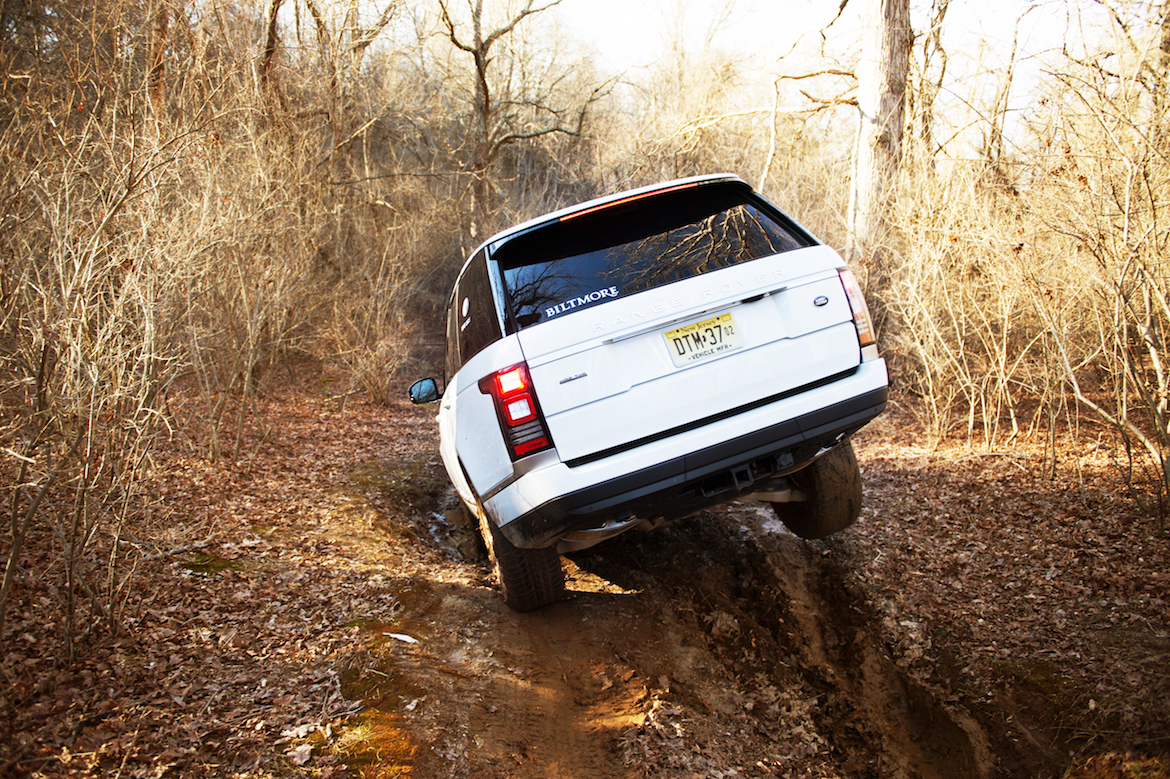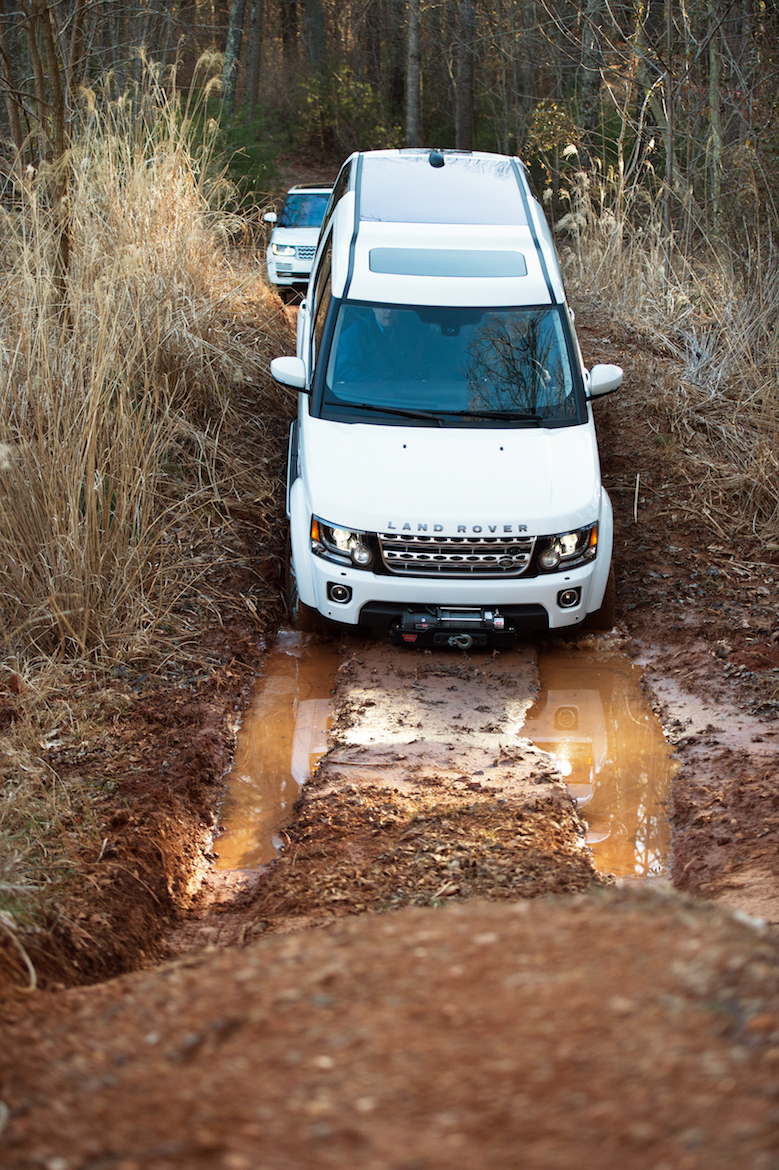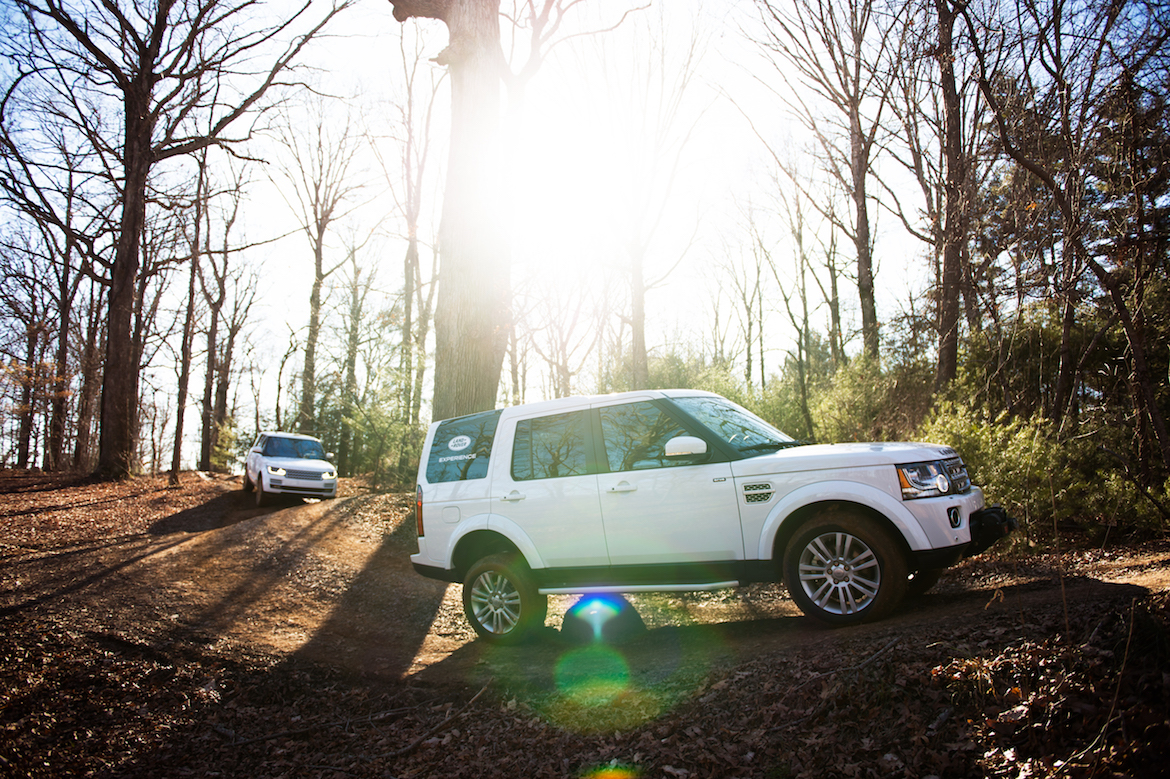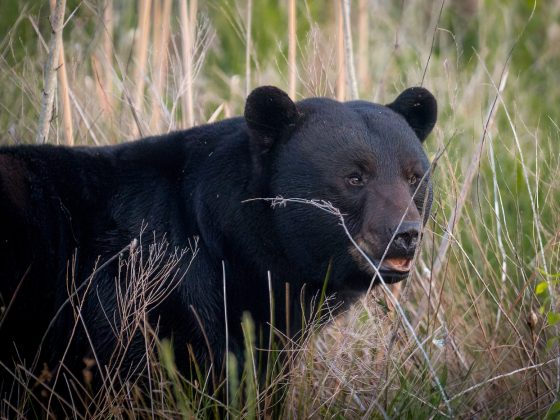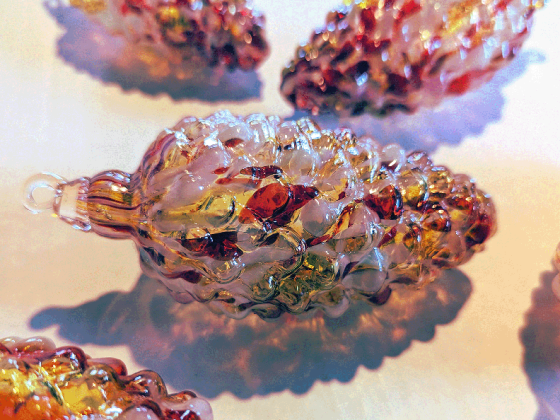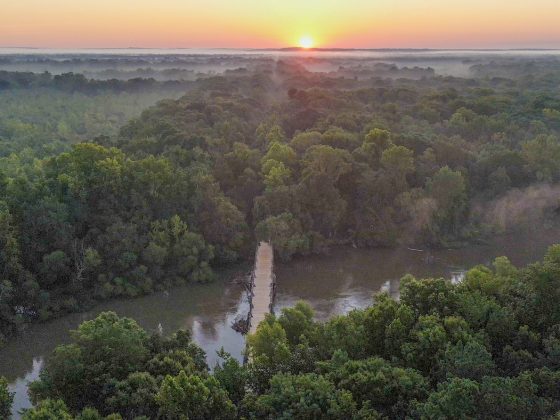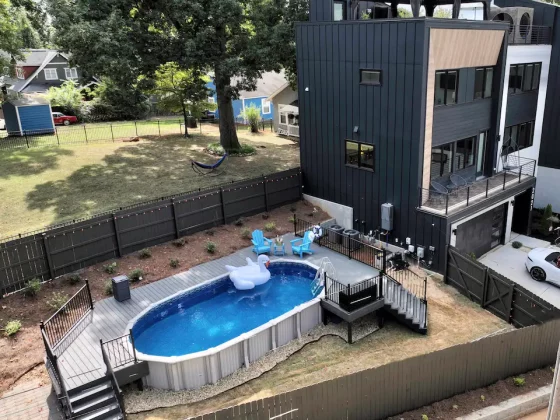We’re spinning tires. The incline sits at 25 degrees, if not steeper, and the scary-looking rocks and roots up the hill are laughing at me because I can’t even make it to them: I was too cautious, too afraid of the RPMs, and now we’re stuck. The left front wheel of my LR4 angrily spins, grabbing bits of mud and air, providing the vehicle’s sleek white exterior with a red-brown splatter that looks so right. “Let’s back up,” suggests driving instructor Greg Nikolas, so calmly that you’d think I’m driving a shopping cart or a tricycle on evenly-paved ground. Upon throwing the vehicle into reverse and allowing the car to slide what can only be a couple inches down the hill, I’m instructed to return to drive and “stay on the accelerator,” while turning so far to the right that I’m sure we’re going to plow through the little cedar beside the trail. We come out of the depression that I’ve turned into a muddy crater and somehow the car continues straight up the hill, and the steering is mine to control again. Greg has my faith, now, and Land Rover has my undying love.
* * *
The Land Rover Driving Experience at Biltmore Estate starts slowly, and (thankfully) without my hands on the wheel. Instructors Greg Nikolas and Aaron Owens drive at first, demonstrating some of the ways I might avoid toppling the vehicle, and then the instruction ends all too quickly, and we’re switching seats. The trails are mercifully rust-colored, not covered in white, and the ground seems relatively dry. The sun is blinking low through bare trees, and this may just be the most perfect winter afternoon the Estate has ever seen.
Yet I’m breathing hard. I’m not the best of drivers on a good day — my one Interstate 77 experience after 5 on a weekday still haunts me — so I resent my colleagues for forcing me into the first driver’s seat of our two-car convoy. There are more lights and buttons, graphics and switches than I’ve ever seen in a luxury vehicle, and I can’t seem to figure out what this attractive circular thing near my right hand is. The evidence of the “P-N-R-S” lights notwithstanding, I reach a verdict: “That’s the gear selector,” Greg’s instructive intuition prompts him to reveal. As we make our first major descent, I turn the dial to the S, which, in a Land Rover, stands for “Sport.” This is the driving mode which ensures I’m taking on a downward slope in the safest possible way…and after that first descent, I feel safe. This automobile marvel is inherently drivable in a way that I can’t easily describe.
A half hour later, these controls feel like an extension of myself, the firm leather seat like a comforting cradle rather than the torture device I’d been fearing, and the earth is too pretty, a pristine surface meant to be ripped up by the advanced technology beneath me. A feature called “Hill Descent Control,” when turned on, restricts the vehicle’s speed to a set limit while traveling downhill, like a kind of offroading cruise control. The LR4’s “Dynamic Stability Control” manipulates the engine’s power output and applies the brakes at individual wheels, when needed. It’s all making a lot more sense: This vehicle is built for this purpose.
Still, so much of this experience seems counterintuitive. I need to turn the wheel left, my instincts shout. I need to. But I actually need to turn right. Offroading, like racing or other sports driving, is an art form supported by science, instructor Greg Nikolas explains. “The science is black and white, but the art — the application of the science — is very grey. Using the provided technology, “we can prepare the vehicle for the hillside we’re approaching now, but how much throttle or forceful steering we’re going to need in that instance is up for debate.” The LR4 is designed to do the work for me; I just have to understand which feats it is and isn’t capable of. And this, I think, is exactly what Land Rover wants to teach me. Otherworldly technology or no, the vehicle is only as physically capable as its driver is mentally, pragmatically prepared.
I wasn’t cut out for this, I’d thought. So thinks everyone who hasn’t felt these transcendent automobiles do what they’re created to do. After my LR4 and I have bonded so well on mud, I don’t know if I ever want to drive one on pavement. My last challenge finds me teetering over two several-feet-deep dips in the ground, and I couldn’t be more excited to find a way out of this precarious mess. This — the mud splash, the rocky imbalance, the axles contorted in a way that shouldn’t be possible — this is Land Rover.


